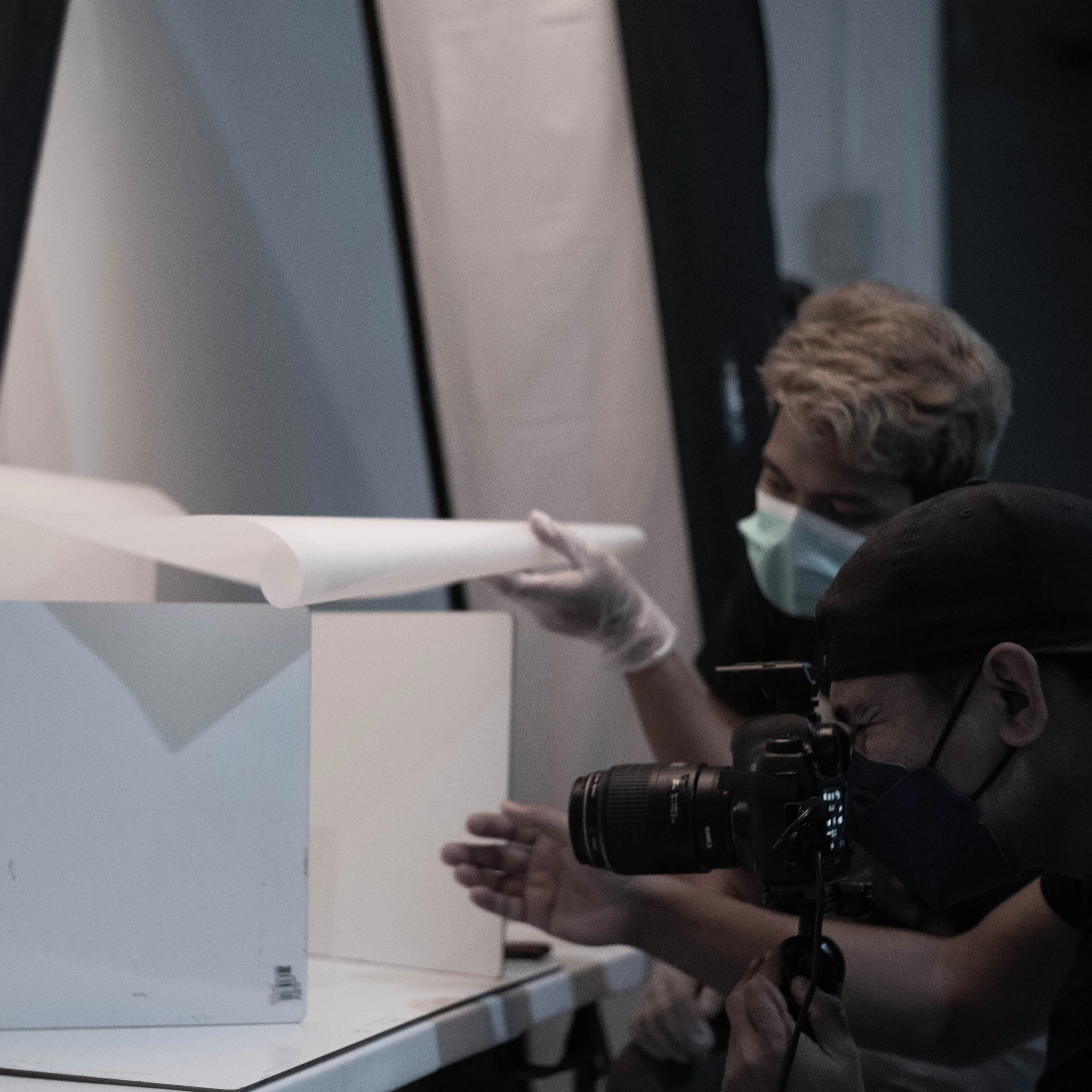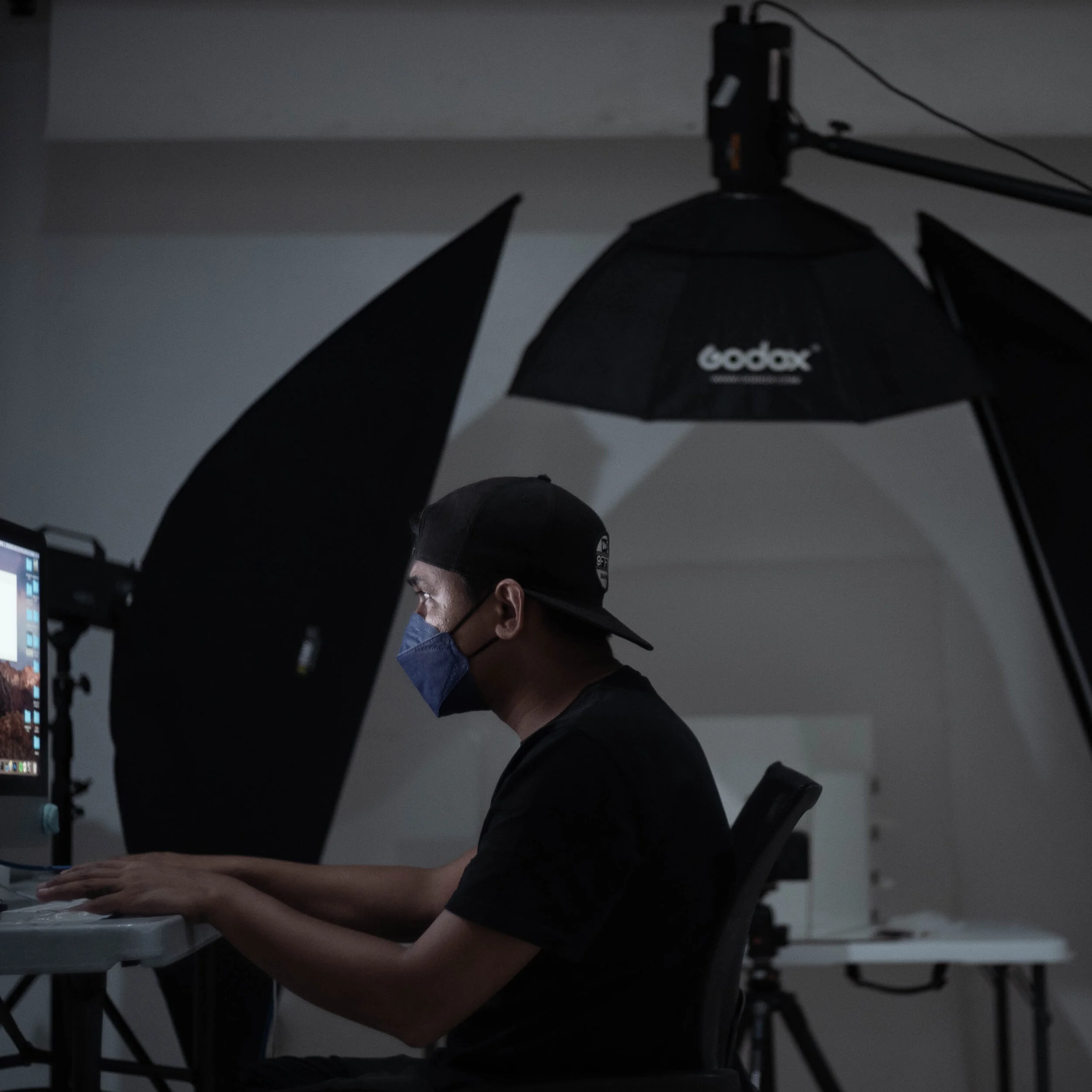SECONDMENT: THE BEST OF BOTH WORLDS
Setting up your own in-house product photography studio clearly has its advantages, but it’s not without its pros and cons. And although it offers plenty of benefits, they come at a pretty hefty cost.
The initial expense for personnel, equipment, and space are significant, even with a minimal set up. If your requirements are more demanding, you could see your start up costs skyrocket. That’s why outsourcing is an attractive alternative, due to its convenience and cost effectiveness..
But there’s simply no substitute in having a say over every minute detail and enjoying flexibility and control. An in-house set up gives you more freedom to maneuver and make changes on the fly. That means an accelerated time to market, allowing you to get your product shots out there quicker to sell sooner. Even if a reputable studio could turnover images in a matter of days, if you control the workflow and output, you could have hot-selling items jump the line and have those shots within the day.
When you outsource, you have to give up at least some control. You’re also not going to be the only client, so if you want something done urgently, you’ll have to wait in line. The caveat, however, is that establishing a studio in-house is an immense undertaking that’s potentially disruptive to your operations.
Editing and archiving images are a vital step in the process
How to Set Up an In-House Studio Without Setting Up an In-House Studio
The volume of images you need plays the biggest factor in deciding whether you should outsource or not. If you don’t meet the criteria of tens of thousands of product shots a year, then that leaves outsourcing as your only viable option.
However, you can actually outsource your product photography to a professional studio and still get the benefits of an in-house team.
It’s a happy middle where you can bypass the learning curve, avoid the huge initial investment, with none of the upkeep. If your business simply can’t justify the expense of putting up its own studio for whatever reason, you can opt for secondment.
This essentially means a studio, like FMI, will second a team that exclusively handles your company’s product photography requirements. It’s like tapping a third party service provider, like you would for custodians and security.
No Need to Start From Scratch
This is the closest you can get to a turn key solution. You get access to a highly specialized team with years of experience and an established workflow. And once you get past the initial phase of making sure the studio knows what you want and how you want it, you can pretty much set it and forget it. You can even consider hiring offshore where rates are lower and more than compensate the cost of shipping (depending on your product, of course).
This is how you get a dedicated, professional product photography team with none of start-up cost. And since you’re already dealing with a well-established organization, there’s no need to invest in your outsource team. Everything’s set up, and all that’s left is to plug and play. You can leverage the studio’s experience, equipment, and studio space right away. And by dealing with an independent company, there’s no need to worry about accounting, HR functions, or IT solutions.
Color accuracy check
All Upside
A professional studio’s core businesses is to produce high quality images efficiently and cost effectively, which makes them a pretty safe bet. This also means they’ll consistently maintain and upgrade their gear to ensure the highest quality output and stay updated in the changing platform requirements. You can add all this to the list of things you don’t have to worry about.
For large, heavy items that are difficult and/or expensive to ship, you can even have a studio can set up shop in your office or warehouse, which can offset the cost of transport.
Plus, unlike running your own operation, your costs are fixed. It’s the best of both worlds, with none of the downside! You can expand your capabilities without disrupting productivity and for much less than putting up your own team in-house. And it lets you to focus your time and resources on the core of your business.
Now you can count on your outsource team as an integral part of your company. After all, you specifically hired them to fill the gaps in your own organization, so make the most out of it by leveraging their expertise and taking advantage of knowledge sharing.
And if you’re planning on setting up your own studio in-house eventually, secondment works in a transitional capacity, where your people can train under your service provider in preparation for the full turnover of responsibilities. Your new team benefits from knowledge sharing to help build their confidence and competencies.
What to Look For
If you decide to outsource your product photography, or bring in a team to for secondment, then finding the right professional studio is key. Canvas the market to see who’s the right fit. Check out our guide on how to choose a professional photography studio.
Working with a local studio in the same city has its obvious advantages. You can easily pop into the studio should any issues arise, and the cost of shipping is low. And there’s the added bonus of supporting a local business.
Getting a professional studio with a proven track record is the best guarantee you’ll get to make sure your product shots are up to standard. That’s because they have the expertise, experience, and equipment to get it done right.
Choose one that possesses the infrastructure for high-volume projects, equipped with software systems that streamline their workflow, and image production management software that lets you review your shots online in every step of the post-production process.
If you’re still not convinced, here are a few more reasons why you should hire a professional.
Got questions regarding outsourcing your product photography? Send us a message or leave a comment below.
https://www.visualskus.com/imaging-services-blog/3-options-for-outsourcing-your-product-shots/



